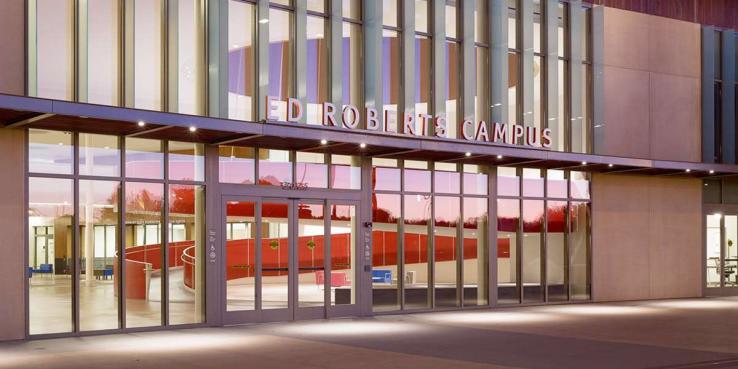What do we mean when we say a home, a street or a city is “accessible”? Access is more than a measure of the physical characteristics of the built environment, the number of wheelchair ramps or hand rails. It also encompasses services and benefits, creates an atmosphere of safety, adapts to changes in ability and provides the comfort of home — and it impacts a person’s overall sense of freedom and representation. At a recent SPUR forum, Thomas Gregory of the Center for Independent Living, Erick Mikiten of Mikiten Architecture, Sheraden Nicholau of the State Council for Cognitive Disabilities and Shaina Li of Common discussed what architects, designers, planners and citizens can do to increase access in our cities. This program was one of a series on cities and inclusion co-presented by SPUR and The Kelsey.
Cites boast public resources such as parks, culture and transportation. But can these resources be considered truly public if some face challenges accessing them? Accessibility means making a service or resource available for everyone to benefit from equally. Thomas Gregory explained that because of changing conditions and needs, accessibility is an ongoing effort, not a static outcome. Similarly, accessibility cannot be tacked on at the end of a project. It must be planned from the start, among all stakeholders. Access is the dynamic process of learning and then adjusting to the needs of everyone who wants to use a space or resource.
In addition to its physical dimensions, access also has to do with one’s comfort in an environment, feelings of security and overall calmness. Spaces that are quiet and calm, for example, provide people who have sensory sensitivity with a particularly valuable and rare space. In addition, accessibility allows people to feel greater security about the future. Erick Mikiten explained how he designs homes that are ready to accommodate different kinds of mobility, such as wheelchairs and walkers, as many people worry that a change in their mobility could result in a housing change and create instability. Dependability and consistency, then, are also fundamental characteristics of access.
In the case of a library, for example, access would first mean that the building allows everyone to move freely and comfortably through the environment. But it would also mean stocking materials like audiobooks, ensuring that library communications are easy for everyone to understand and implementing an outreach program to identify how the library can improve the reach and use of its resources. The methods one library uses to advance access would be consistent with those used in other libraries, so a visitor could easily navigate different branches.
From Access to Universal Design
Creating “universally” designed cities — designing for all needs and putting the goal of access directly into the design process — is an effort supported by advocates from diverse fields including architecture, construction, nonprofits, development and social services. Mikiten explained how universal design allows builders and designers to create accessibility in spaces and environments. Sidewalk curb cuts are a great example of universal design: wheelchair users, bikers and people with strollers all benefit when curbs include small ramps at corners and crosswalks. Additionally, Mikiten explained how universal design and green building share many foundational principles: designing a structure that is flexible and considering potential changes in accessibility over time are core elements of universal design and are ecologically sound.
Designing Cities for Universal Access
Neither accessibility nor universal design are given design elements. Sheraden Nicholau explained that developers must call for universal design and access in housing projects and reach out to ensure that the voices of people with disabilities are brought to the table. Making sure that the written language and communication methods in outreach processes are accessible and including users and advocates in all stages of the process, including completion, can help increase the accessibility of their project.
Beyond construction and housing, the speakers addressed how policy, education and collaboration can increase access to housing and services across the state. Gregory explained how individual lobbying can ensure that policies supporting access are passed, while Nicholau emphasized that to achieve California’s housing goal for adults with disabilities, cities and counties must coordinate their efforts throughout the state.
While creating accessible homes, streets and cities is complicated work, the speakers emphasized that universal design is not more expensive, nor less attractive — in fact it benefits everyone, whether a person realizes it or not. Making cities for everyone is a critical goal in urban planning at all scales. For everyone to benefit equally from city resources, policymakers, designers and builders must prioritize accessibility and ensure that the process integrates input from the community at all stages.
Thank you to Micaela Connery and Lindsay Johnson of The Kelsey.
